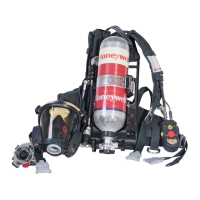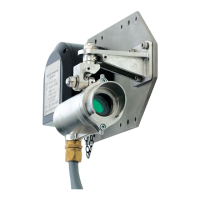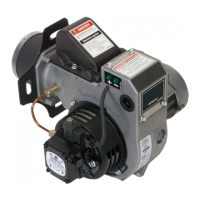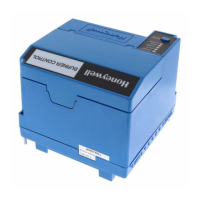1 2
11 12 13 14
Installation Guide
Issue 6 07/2017
MAN0558_EMEAI
2104M0510
© 2017 Honeywell Analytics
Searchline Excel
Open Path Infrared Gas Detector
Find out more
www.honeywellanalytics.com
Contact Honeywell Analytics:
Europe, Middle East, Africa, India
Life Safety Distribution GmbH
Javastrasse 2
8604 Hegnau
Switzerland
Tel: +41 (0)44 943 4300
Fax: +41 (0)44 943 4398
India Tel: +91 124 4752700
gasdetection@honeywell.com
Americas
Honeywell Analytics Inc.
405 Barclay Blvd.
Lincolnshire, IL 60069
USA
Tel: +1 847 955 8200
Toll free: +1 800 538 0363
Fax: +1 847 955 8210
detectgas@honeywell.com
Asia Pacic
Honeywell Analytics Asia Pacic
7F SangAm IT Tower, 434 Worldcup Buk-ro,
Mapo-gu, Seoul 03922
Korea
Tel: +82-2-69090300
Fax: +82-2-69090328
analytics.ap@honeywell.com
Technical Services
EMEA: HAexpert@honeywell.com
US: HA.us.service@honeywell.com
11063
Please Note:
While every effort has been made to ensure
accuracy in this publication, no responsibility
can be accepted for errors or omissions.
Data may change, as well as legislation and
you are strongly advised to obtain copies
of the most recently issued regulations,
standards and guidelines. This publication is
not intended to form the basis of a contract.
This guide provides the installation personnel with the basic information
necessary to mechanically install the Searchline Excel system units and
make the necessary electrical connections.
This guide is not intended to replace the associated Searchline Excel
Technical Handbook (2104M0506) which contains the full safety,
installation, commissioning, maintenance and fault nding instructions.
These procedures assume that consideration of the location and
mounting of the system units has already been taken into account in
accordance with the guidelines in the Technical Handbook.
The following diagram shows a typical system conguration and
identies the main parts.
CONTENTS
INSTALLATION INSTALLATION INSTALLATION
1. INTRODUCTION
1. Introduction 2
2. Safety 3
3. Mechanical assembly 4
3.1 General 4
3.2 Transmitter 4
3.3 Receiver 4
3.4 Adjustable Mountings 5
4. Installation 6
4.1 General 6
4.2 Mechanical Installation 6
4.3 Electrical Installation 10
4.3.1 Electrical Connections 10
4.3.2 Electrical Installation 12
4.3.3 Receiver Connections via OELD 12
4.3.4 Receiver Connections via DX100(M) 13
4.3.5 Transmitter Connections 13
4.3.6 Remote Installation Receiver Connections 14
4.3.7 Transmitter Connections - Turbo Heating Disabled 14
INSTALLATION
f. The earth bonding arrangement must ensure that the maximum
peak voltage between the unit case earth and any eld cable
conductor is less than 350V. Voltages in excess of this can cause
permanent damage to the unit’s RFI protection lters.
g. The use of a single, screened cable for each gas detector ensures
maximum screening and minimum crosstalk. Cabling arrangements
which use a single cable for connecting a number of eld devices
compromise screening, increase the potential for crosstalk and
prevent implementation of true star earthing.
h. Any electrical interference induced onto the 4 - 20mA loop
conductors by the installation must be kept below the levels
necessary to comply with the general requirements of EN 60079-
29-1 &, IEC 60079-29-1. In practice, this means that
peak noise currents induced on the current loop should be no
greater than ± 0.25mA
j. The 0V rail of the control card/control system is directly connected
to one side of the 4 - 20mA current sensing resistor. Electrical noise
on this rail is therefore directly connected to the 4 - 20mA input.
In order to avoid additional noise being induced on the 0V rail,
it should not be commoned with the safety earth/ground, which
frequently carries a high level of electrical noise.
k. All electrical equipment connected to the gas detector should
comply with EN61000-6-3 and EN61000-6-2.
l. The 24V supply should be free from large transients and
uctuations.
m. The eld cabling conductors should have sufcient cross sectional
area to ensure that the minimum supply voltage applied to the gas
detector is 18V at a current of 420mA. This corresponds to a
maximum round loop impedance of 14 ohms for a nominal 24V
system supply.
n. Receivers should not be installed in close proximity to the antennae
of high powered radio, radar and satellite communication
equipment.
4.3.3 Receiver Connections via OELD
4.3.2 Electrical Installation
1. Isolate all associated power supplies and ensure that they remain OFF
during this procedure.
2. If the units are to be installed with junction boxes other than
OELD or DX100(M) junction boxes, ensure that the boxes:
• have M20 cable gland entries for ATEX / IECEx units, or 3/4 NPT
for UL and CSA.
• have terminals for 5 wires and an earth.
3. Remove the M20 blanking plugs (if tted) and attach the Excel
transmitter and receiver cables to their junction box. Fit the locking
rings (if supplied) before terminating the cables in the junction box.
4. Fit approved cable glands to the junction box cable entries, using
sealing washers where necessary to maintain the ingress protection
rating.
5. Fit approved blanking plugs to all unused cable entries.
6. Make appropriate electrical connections as shown in the following
diagrams.
4.3.4 Receiver Connections via DX100(M)
4.3.7 Transmitter Connections - Turbo Heating Disabled
4.3.6 Remote Installation Receiver Connections
The earth bonding arrangement must ensure
that the maximum peak voltage between the
unit case earth and any eld cable conductor
is less than 350V. Voltages in excess of this
can cause permanent damage to the unit's RFI
protection lters.
Note: The Dx100(M) is housed in a metal
enclosure.
CONTROL
CABINET
CONNECTIONS
4-20mA OUT (TB2/3)
0V (TB2/6)
+24V (TB2/2)
BLACK (0V) TB2/5
RED (+24Vdc) TB2/1
BLUE (B) TB1/3
ORANGE (A) TB1/2
EXCEL RECEIVER WIRING
CABLE SCREEN
INSTRUMENT (CLEAN)
EARTH STAR-POINT
Modbus A (TB1/6)
Modbus B (TB1/5)
Modbus Drain
CABLE SCREEN
SAFETY / PROTECTIVE
GROUND
Where the DX100(M) is not bonded
to a local safety/ protective earth
then an external safety / protective
earth needs to be made as shown.
GREEN/YELLOW (EARTH)
Same potential as Excel body and conduit.
WHITE (4-20mA) TB2/3













